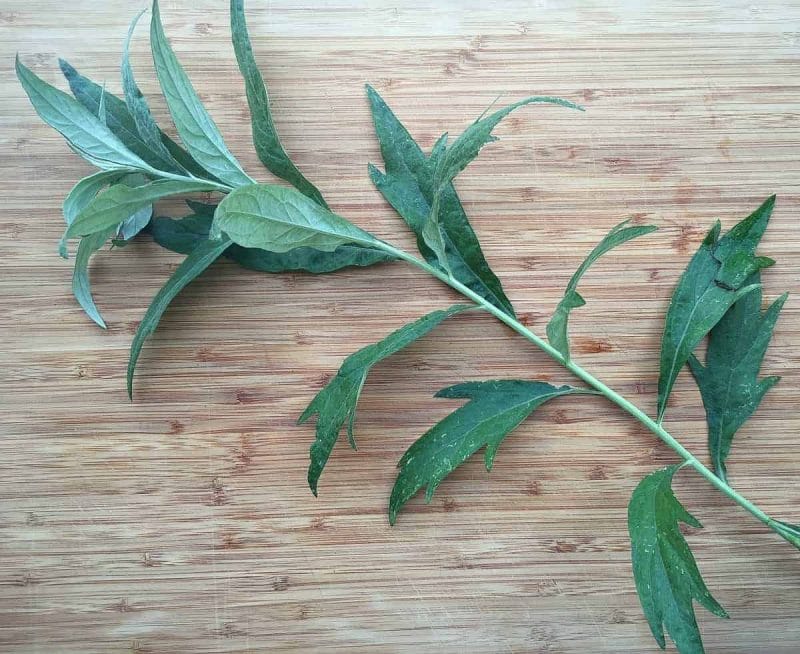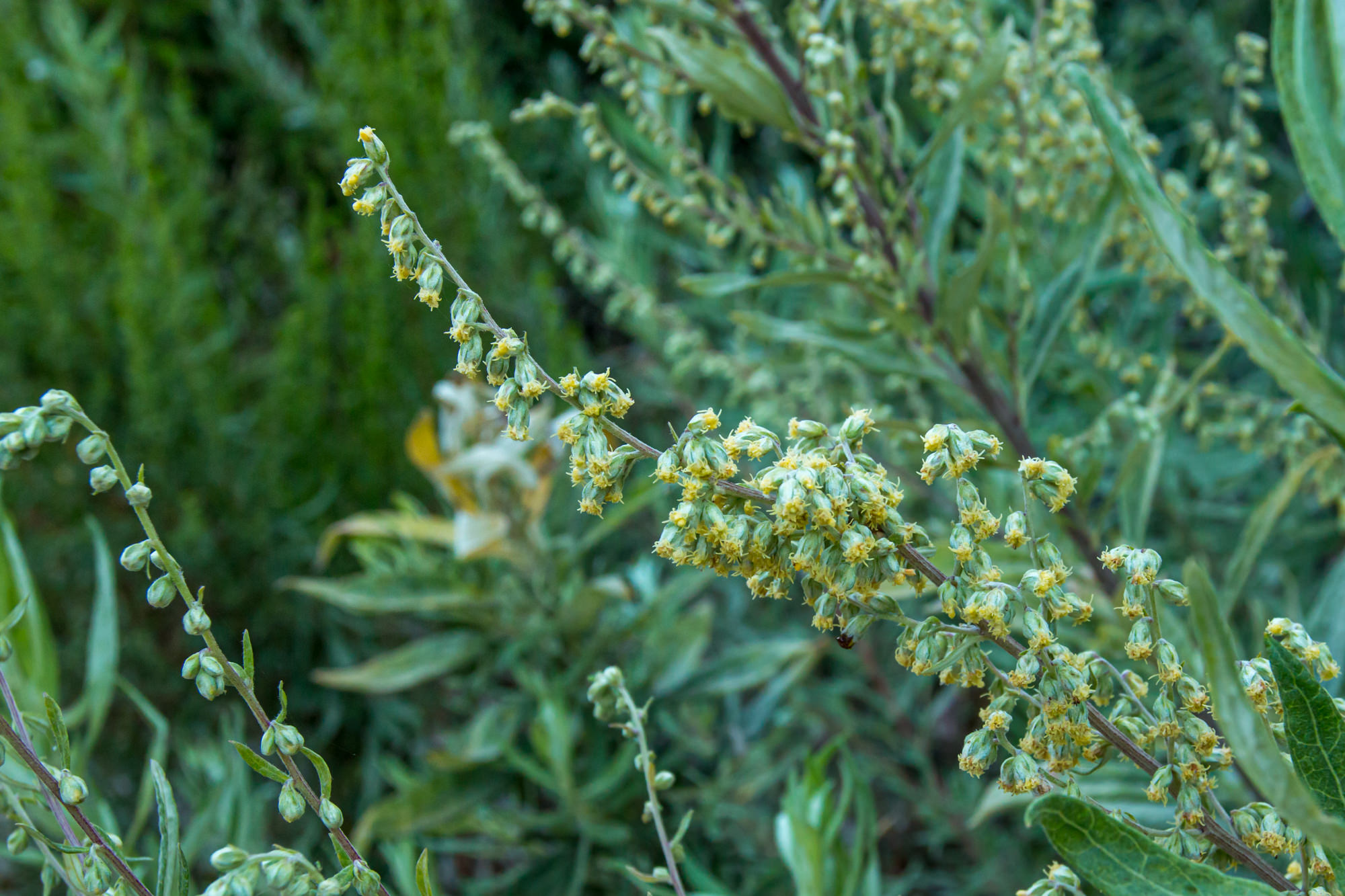How To Grow And Use Common Mugwort
Introduction
Mugwort (Artemisia vulgaris) is a hardy perennial herb that has been used for centuries for its medicinal and culinary properties. It is native to Europe, Asia, and North America, and can be found growing wild in many parts of the world.
Mugwort is a member of the daisy family, and its leaves have a strong, camphoraceous aroma. The plant can grow up to 6 feet tall, and its flowers are small and yellow.
Mugwort has a long history of use in traditional Chinese medicine, and it is still used today in many Asian cultures. It is believed to have a number of health benefits, including:
- Improving digestion
- Reducing inflammation
- Boosting the immune system
- Relieving pain
- Promoting sleep
- Increasing fertility
Mugwort is also a popular ingredient in herbal teas, tinctures, and essential oils. It can be used to flavor food, and it is also said to be an effective insect repellent.
Growing Mugwort
Mugwort is a relatively easy plant to grow, and it can be grown in a variety of climates. It prefers full sun, but it can tolerate partial shade. The soil should be well-drained, and it should be rich in organic matter.
Mugwort can be propagated from seed, cuttings, or division. Seeds should be sown in the spring or fall, and they will germinate in about 2 weeks. Cuttings can be taken in the spring or summer, and they will root in about 2 weeks. Division can be done in the spring or fall.
Once mugwort is established, it is a relatively low-maintenance plant. It does not need to be watered often, and it is not susceptible to many pests or diseases.
Harvesting Mugwort
Mugwort can be harvested throughout the growing season. The leaves are the most commonly used part of the plant, but the flowers and roots can also be used.
To harvest the leaves, simply snip them off with a pair of scissors. The leaves can be used fresh or dried.
To harvest the flowers, wait until they are fully open. The flowers can be used fresh or dried.
To harvest the roots, dig them up in the fall. The roots can be used fresh or dried.
Using Mugwort
Mugwort can be used in a variety of ways. It can be brewed into a tea, made into a tincture, or used in essential oil blends. It can also be added to food, or used as an insect repellent.
Here are some specific ways to use mugwort:
- Tea: Mugwort tea is a popular way to enjoy the health benefits of this herb. To make mugwort tea, simply steep 1-2 teaspoons of dried mugwort leaves in hot water for 5-10 minutes.
- Tincture: Mugwort tincture is a concentrated form of the herb that can be used to treat a variety of health conditions. To make mugwort tincture, steep 1 ounce of dried mugwort leaves in 8 ounces of vodka or brandy for 4-6 weeks.
- Essential oil: Mugwort essential oil is a powerful and versatile essential oil that can be used for a variety of purposes. To use mugwort essential oil, dilute it with a carrier oil and apply it to the skin, or add it to a diffuser to create a relaxing atmosphere.
- Food: Mugwort can be added to a variety of foods, including soups, stews, salads, and stir-fries. It can also be used to flavor tea, beer, and wine.
- Insect repellent: Mugwort has a strong, camphoraceous aroma that repels insects. To use mugwort as an insect repellent, simply crush the leaves and rub them on your skin.
Conclusion
Mugwort is a versatile and beneficial herb that can be used in a variety of ways. It is easy to grow, and it has a long history of use in traditional medicine. If you are looking for a natural way to improve your health, mugwort is a great option.
Common mugwort is a versatile herb with a long history of use. It has been used for medicinal purposes, as a culinary herb, and in religious and spiritual practices. If you are interested in learning more about common mugwort, I encourage you to visit Home Gardening. This website provides a wealth of information about the herb, including its history, uses, and potential side effects.
FAQ of common mugwort
- What is common mugwort?
Common mugwort (Artemisia vulgaris) is a tall, herbaceous perennial plant native to Europe, Asia, and North Africa. It is a member of the daisy family and is related to wormwood. Mugwort has a long history of use in traditional medicine, and is now being studied for its potential health benefits.
- What are the health benefits of common mugwort?
Mugwort has a number of potential health benefits, including:
- Reducing inflammation
- Improving sleep
- Boosting the immune system
- Reducing nausea and vomiting
- Relieving menstrual cramps
- Treating anxiety and depression
- Increasing circulation
- Improving cognitive function
- How can I use common mugwort?
Mugwort can be used in a variety of ways, including:
- Making tea
- Taking as a tincture
- Applying as a compress
- Burning as an incense
- Adding to food
- Is common mugwort safe?
Mugwort is generally safe when used in moderation. However, it can cause side effects in some people, such as nausea, vomiting, diarrhea, and headache. It is also important to note that mugwort can interact with certain medications, so it is important to talk to your doctor before using it.
- How do I harvest common mugwort?
The best time to harvest common mugwort is in the early summer, when the leaves are young and tender. To harvest, simply cut the stems about 2 inches above the ground. The leaves and flowers can then be dried for later use.
- Where can I find common mugwort?
Common mugwort is a common weed, so it can be found growing in many places, such as fields, roadsides, and gardens. It is also available at some health food stores and online retailers.
Image of common mugwort
- Image 1: A close-up of a mugwort flower, showing its yellow petals and green bracts.

- Image 2: A mugwort plant in full bloom, with its tall, slender stems and feathery leaves.
- Image 3: A mugwort leaf, showing its serrated edges and silvery-white underside.
- Image 4: A mugwort field, with its distinctive purple-brown flowers.
- Image 5: A mugwort sprig, with its dried leaves and flowers.

- Image 6: A mugwort teabag, made from dried mugwort leaves.
- Image 7: A mugwort essential oil, made from the leaves and flowers of the plant.
- Image 8: A mugwort tincture, made from the leaves and flowers of the plant that has been macerated in alcohol.

- Image 9: A mugwort poultice, made from mashed mugwort leaves that have been applied to the skin.

- Image 10: A mugwort bath, made by adding mugwort leaves to a hot bath.



Post a Comment for "How To Grow And Use Common Mugwort"